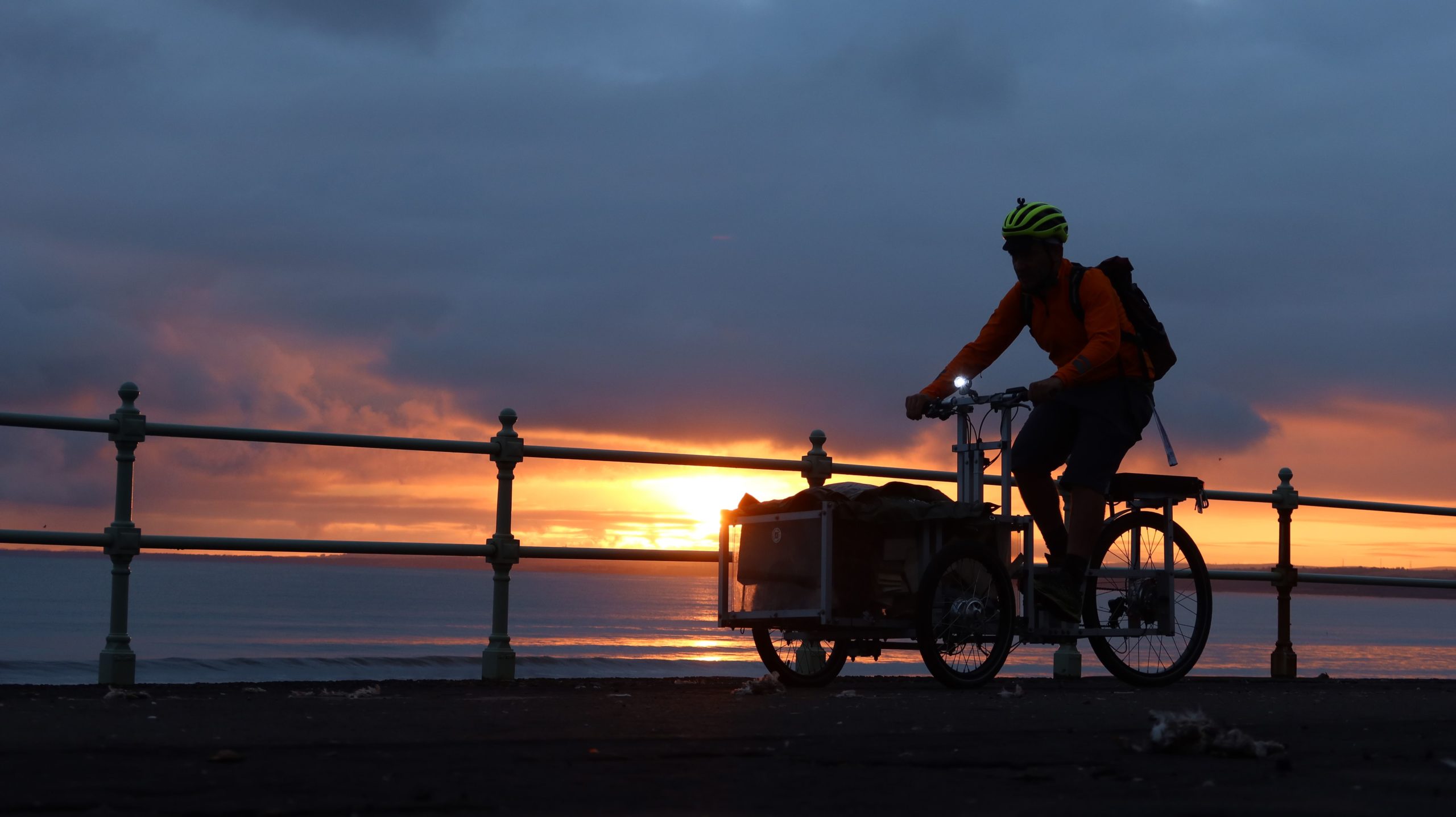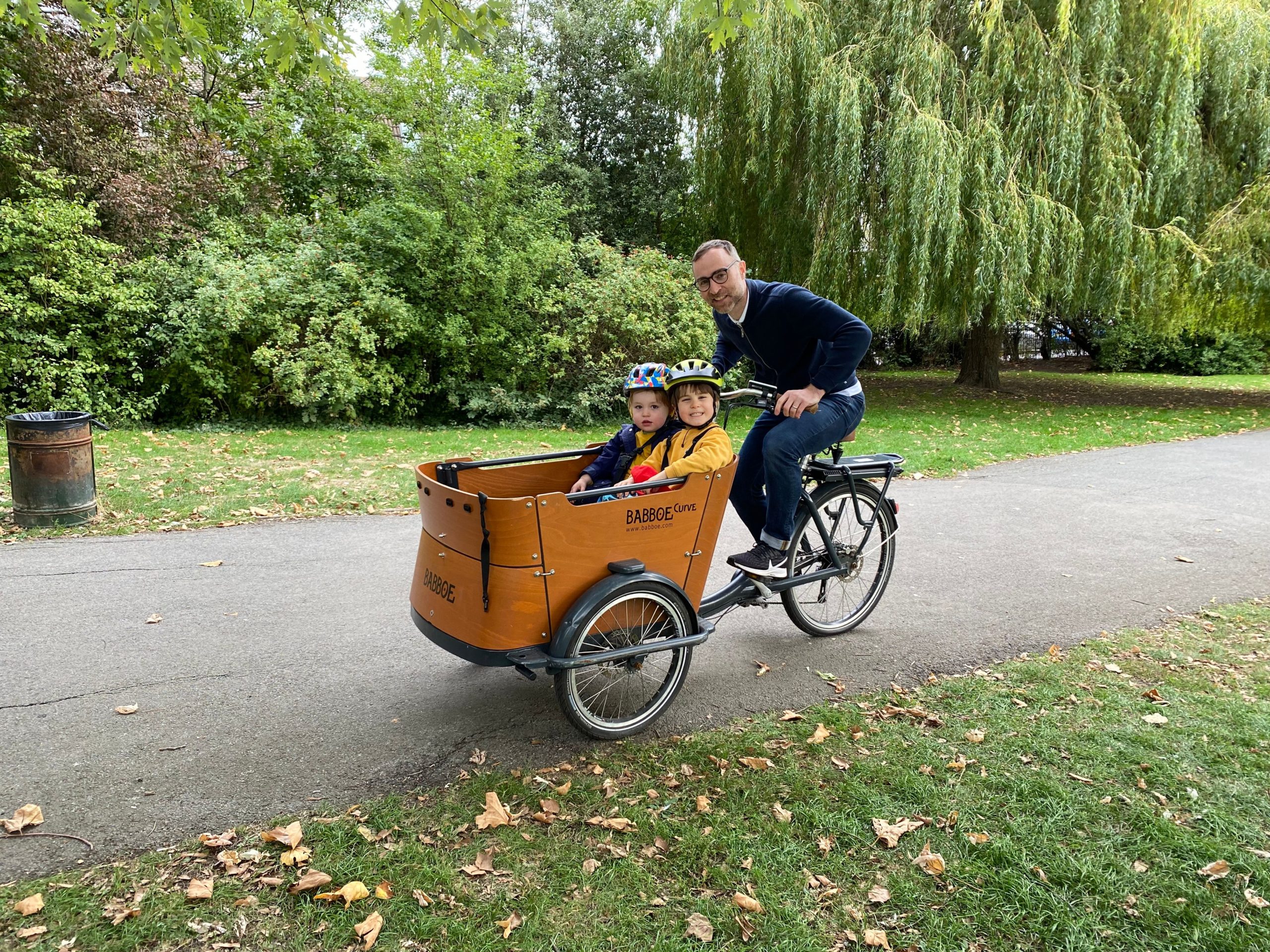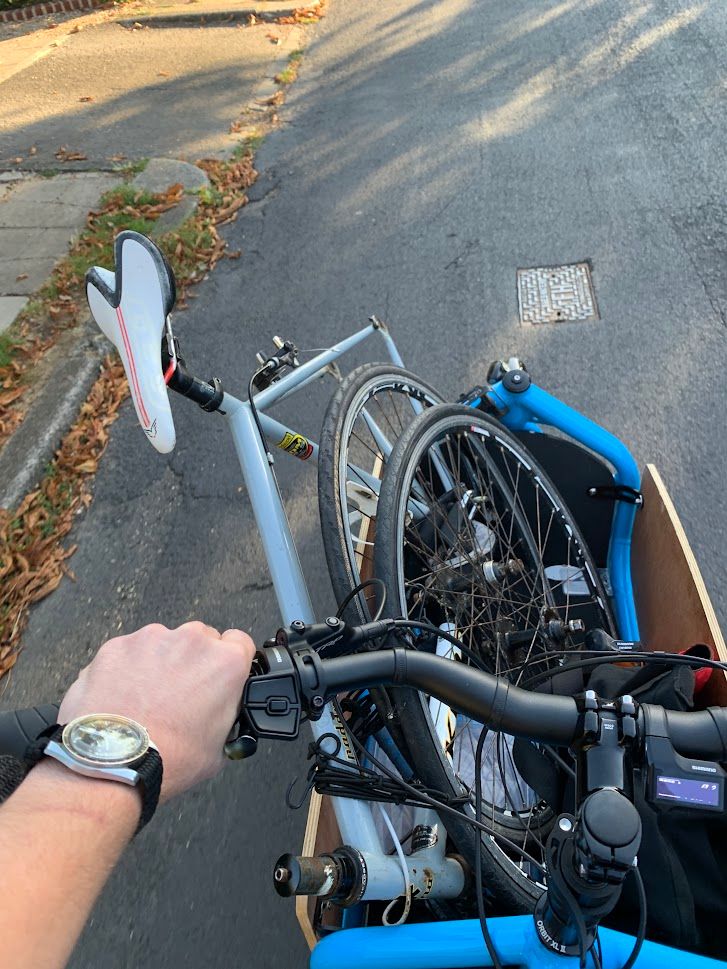IS it time to ditch the car?
It was World Car Free Day last week. And while it didn’t change much for me, as I use my bikes most days, it inspired me to dig a little deeper into the subject of replacing a car with a bike or other more sustainable modes of transport. Living in Edinburgh I used to own a car until April 2018, and then decided not to replace it when the MOT bill was more than the remaining value of the car.
For most of my longer journeys I prefer taking public transport, as I can use the travel time to answer emails or write, or simply as much needed downtime. If I have work or travel that is simply not possible by public transport, I use my bike for short distances, and hire a car for longer distances. So far this strategy has proven much more cost effective than owning a car.
One reason for replacing my car was that it was simply standing around doing nothing. I am living on my own in a well-connected city, I don’t have kids, so life is much easier for me, with a greater flexibility to replace the car. While simple journeys like getting to meetings are easy to do by bike, it gets a bit more tricky when larger loads are involved. Having recently moved house, I had some bigger loads to move around, reluctant to use a car.
The solution was a cargo hire bike scheme from Porty Community Energy. This 6-month trial project, ending at the end of October, allowed me to hire an E-Cargo Trike, provided on loan by the Edinburgh Cargo Bike Movement, one day at a time for free. Reserving the bike was easily done online, and after a short introduction I was off on my first trip with the bike, picking up shelves from IKEA.
The trike was a bit of a beast to cycle at first, but it allowed me to move furniture for my new flat and boxes of books from the office home. And several runs to pick up free firewood for my wood burner will save me money this winter.

Riding the cargo trike was also a good way of finding out if the current cycling infrastructure in Edinburgh could be used by users like people with disabilities. Most of the time I was fine on cycle paths, it was only structures like bollards that forced me to replan my journey. High curbs were another obstacle. I often use Komoot for my route planning, and was thinking that a cargo bike function would be a great feature for the future, using only cycle paths that are easily accessible.
If I could use cycle paths, the time of day for the journey didn’t really make a huge difference. It was only when I had to revert to roads that timing mattered, as I was stuck with cars. On the flipside the bike was a great conversation starter, and still saved me time. I could park directly outside the places where I picked up wood and furniture, and switching the motor on the bike off was better training than any of my other bikes.
My cargo bike experience was great, and I would be happy to pay if the free trial scheme runs out at the end of October. Or if my use increases, perhaps think about getting a cargo bike in the near future, as I am lucky and have a small garden shed to store it in. But what is the story for people who have a family, need to get their kids to school and don’t have any disposable time or the flexibility I have, or live in rural areas. I spoke to four people, and here are their experiences.
How the Yellow Jersey Team have embraced cargo bikes
First is Yellow Jersey’s managing director Grant Georgiades, who’s eldest son just started school about 1.5 miles from where he lives. His younger brother is at a nursery which is about a similar distance away from home, but in the opposite direction. Living in London just off the south circular, that 3-mile round trip can sometimes take not far off an hour by car.
“Most weeks my wife’s work requires her to head off across the country in the family car. And we still need a way of getting the boys around. We recently made the decision to relinquish our second little run around car when the contract expired, as it was costing a disproportionate amount compared to the number of miles we were travelling in it. And I tentatively took the risk of replacing it with a Babboe Curve cargo bike.
“Given that we live in a terraced house it took a little while to figure out how best to manoeuvre it and secure it into its storage after each use. And the straps aren’t the easiest to adjust. However, now that we’ve got solutions to those challenges and have a good routine up and running, it’s really proving useful. The boys absolutely love it. Nursery and school logistics are a consistent 30 minutes and can be planned around accordingly. Plus it helps me fit in a little bit of physical activity most days, as the battery really struggles with the one big hill near us. But at least it means I get my heart rate up. I’ve just invested in the rain tent to cover the boys in the winter months. Hopefully, the novelty doesn’t wear off for them as I’m fully converted.”

Claims manager Jonathan Ryan is also using the family cargo bike with his partner to cover the little odd trips around town that ‘seem over the top in a car’.
“Before this we were mainly riding bikes for sports/commuting, but wished to move to a less car based life when we moved house. It’s now used on a daily basis to commute to work, including bringing in cupcakes, moving bikes around, taking colleagues to the pub and toddlers to feed the ducks. We find with traffic and parking it’s quicker and easier than jumping in the car, plus you get a lot more attention or comments seeing as they are a rarity in Redhill!”

Grant’s and Jonathan’s experiences mirror my own experience using cargo bikes. If good infrastructure exists, journeys are much more plannable than by car. I am yet to witness a traffic jam on a dedicated cycle path. And while the novelty will eventually wear off, the benefits are strong enough to keep cycling.
But it also doesn’t need a cargo bike to replace the car. Hugh, who works in marketing, uses his trusty hardtail 29er to carry his four year old boy to school.
‘The bike has a simple retrofit frame mounted seat in which he sits comfortably. It’s a mile to drive (slightly less on the bike), half of which is 30mph zone and the remainder being restricted to 20mph, so I don’t ever feel like we’re in danger. When you take into account that you don’t have to worry about finding a parking space which in most cases is rather problematic and it’s quicker, it really is a no brainer. Having the wind in your hair on a warm summer’s day school run is certainly nicer than being stuck in a hot car and of course better for the environment.’

But what about if you live in a rural environment, with no real access to good public transport and longer journeys. An e-bike can still be a great alternative to the car, as Dan Coyle, who offers wild swimming and snorkelling sessions on the west coast of Scotland, demonstrates.
“Around the spring equinox I made a commitment to cycle to most of my sessions over the course of the season. The vast majority of my sessions and experiences are now delivered in this way across the Heart of Argyll area. Occasionally I need a car when going further afield or if I have technical issues with the bike. However, I’ve got to the point now where using a car is a very considered option and a decision that I don’t take lightly.”
Having recently started his business Dan couldn’t afford the expenditure to get an e-bike. This is the situation you might find yourself in as well, as e-bikes or cargo bikes will set you back a few thousand pounds initially. Like in my case with the cargo bike, he made great use of the opportunity to borrow an e-bike from the Ardrishaig Bothy, a community initiative, for free. ‘I’ve eco-consciously covered the equivalent distance of the entire coastline of Argyll & the Islands, 2313 miles (3,723 km), by the autumn equinox.’

cargo bike storage
As brilliant and as practical as Cargo bikes are, their size and weight can often prove to be their Achilles heel when it comes to storage. This is something that you really need to consider if you’re thinking of purchasing one. Our policies will cover theft of your cargo bike when kept within an insured location however, we do not cover any bike or cargo bike which is permanently kept outside, even in the back garden. For more information, check out our bicycle security blog here.
If you need some more inspiration, check out the Edinburgh-based Cargo Bike Movement, an initiative that uses cargo bikes to promote fairer, greener, healthier communities. You’ll be seriously impressed how much a bike can move – hearts, minds and a lot of other stuff.
do yellow jersey insure cargo bikes?
I’m glad you asked! Yes we do cover cargo bikes provided that they meet the U.K EAPC regulations- in other words, they must be limited to 250 watts output, 15.5mph max pedal assist speed, have no throttle and the motor must only be able to be engaged by pedalling. For more information and to get a quote for cargo bike insurance, follow this link.